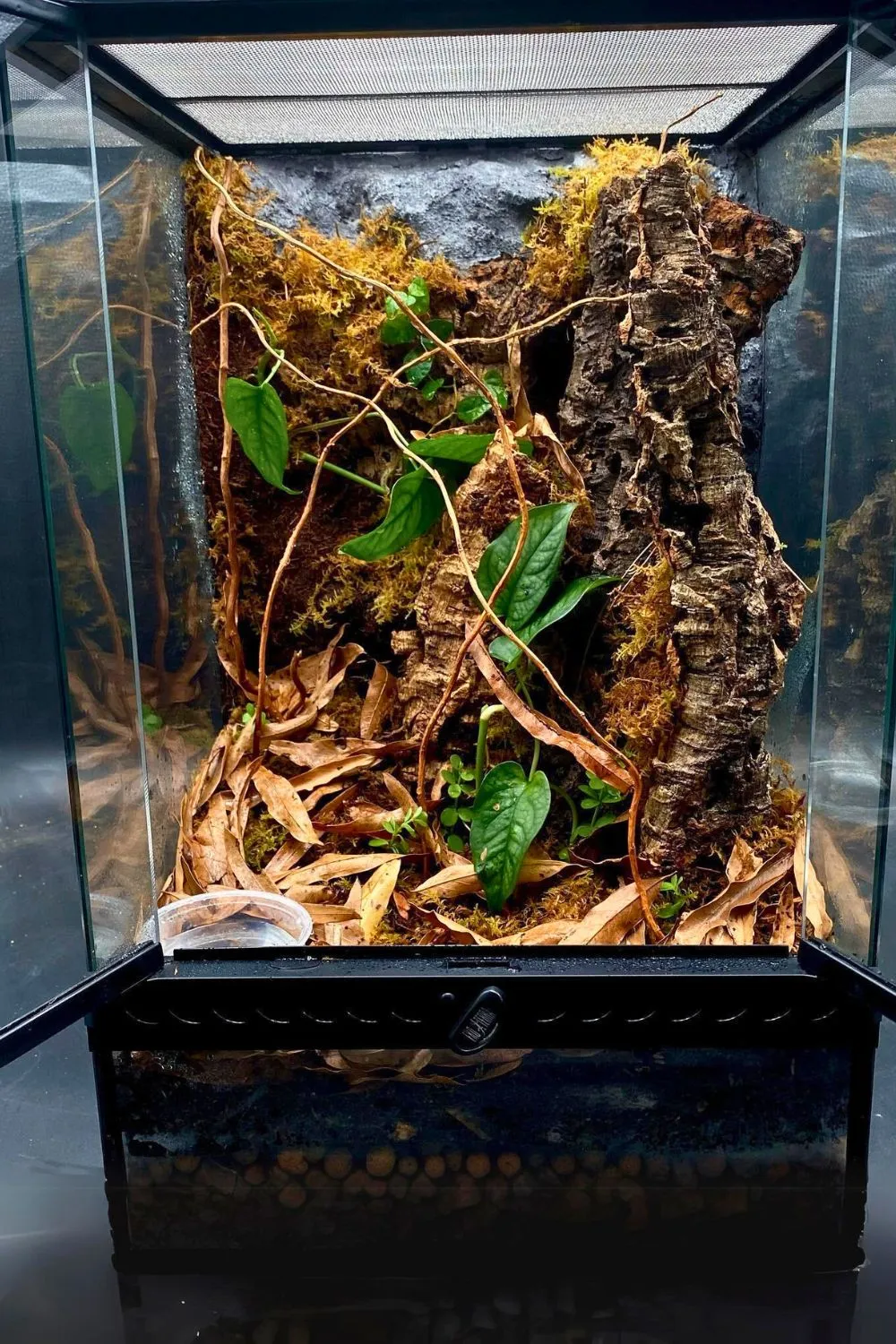Why Use Live Plants in a Tarantula Enclosure
Incorporating live plants into your tarantula enclosure is a fantastic way to enhance the environment for your eight-legged friend, while also creating a more visually appealing display for you. Beyond aesthetics, live plants offer several crucial benefits that contribute to the health and well-being of your tarantula. Choosing the right plants, understanding their care requirements, and integrating them into your setup will significantly enrich your tarantula’s life, mimicking its natural habitat and promoting its overall health. This guide will explore the numerous advantages of using live plants and provide you with the knowledge to create a thriving, bioactive enclosure for your tarantula.
Benefits of Live Plants
Live plants provide a multitude of benefits for tarantulas, far exceeding the aesthetic value. They actively contribute to a healthier and more stimulating environment. These advantages are essential for your tarantula’s physical and psychological well-being. By introducing plants, you’re not just decorating the enclosure; you’re creating a miniature ecosystem that mimics the tarantula’s natural habitat, fostering a more enriching life for your pet. The following sections will break down these benefits in detail, offering insights into how plants improve the enclosure’s functionality.
Improved Humidity
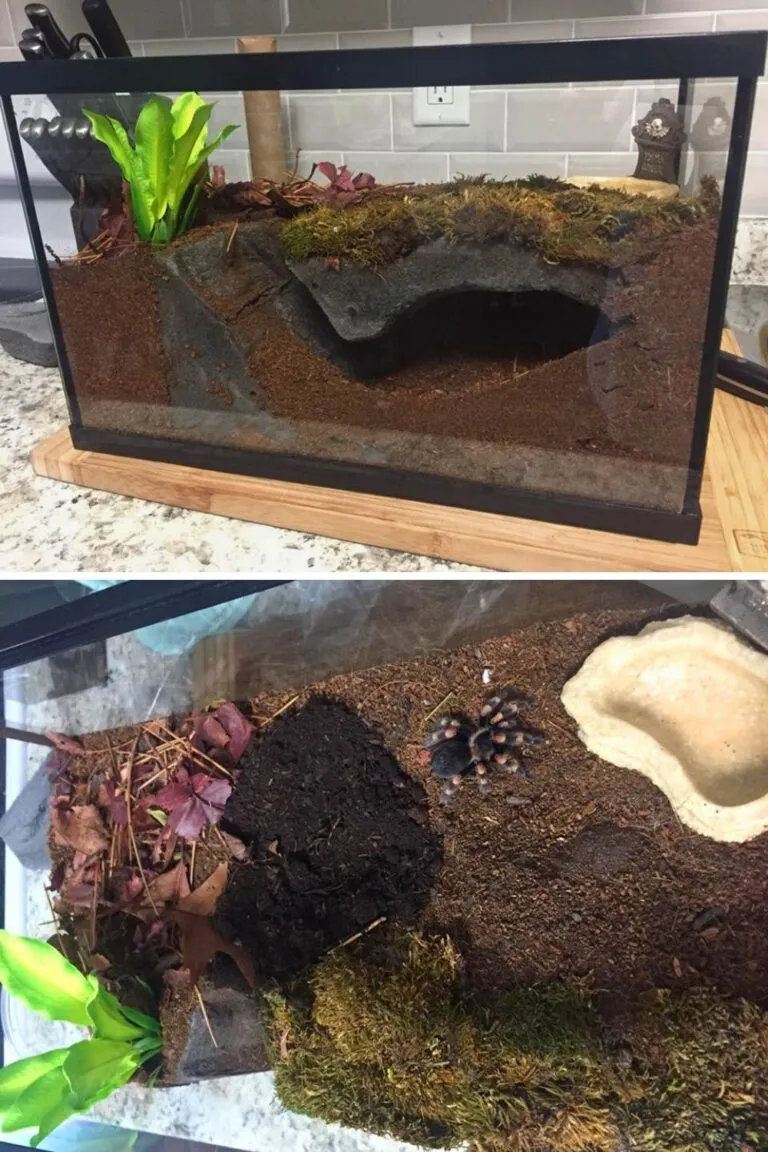
One of the most significant benefits of live plants is their ability to naturally regulate humidity within the enclosure. Plants release moisture through transpiration, a process where water evaporates from their leaves. This continuous release helps maintain a stable and appropriate humidity level, critical for tarantulas, particularly during molting. Proper humidity prevents molting issues and supports the overall health of the tarantula’s exoskeleton. The presence of plants means you can spend less time monitoring and adjusting humidity levels, and more time enjoying your pet. Regular misting of the plants will help to improve these effects.
Natural Enrichment and Aesthetics
Live plants provide enriching elements that stimulate the tarantula’s natural behaviors. They create a more naturalistic environment, giving your tarantula places to hide, explore, and feel secure. The varying textures, colors, and forms of the plants add visual interest to the enclosure, providing mental stimulation for the tarantula. Furthermore, a planted enclosure simply looks more attractive. This creates a more pleasing display and brings a touch of the natural world into your home. Adding plants creates a beautiful and complex environment for your tarantula.
Better Waste Management
In a bioactive setup, plants play a key role in waste management. They absorb some of the byproducts produced by the tarantula and its waste, helping to break down organic matter. The plants also contribute to a healthier substrate environment by supporting beneficial microorganisms that break down waste. This natural waste management system minimizes odors and helps maintain a cleaner, more balanced enclosure, reducing the frequency of deep cleaning and ensuring a more stable environment for your tarantula. Proper waste management minimizes harmful buildup and makes for an overall healthier habitat.
Top 5 Live Plants for Tarantula Enclosures
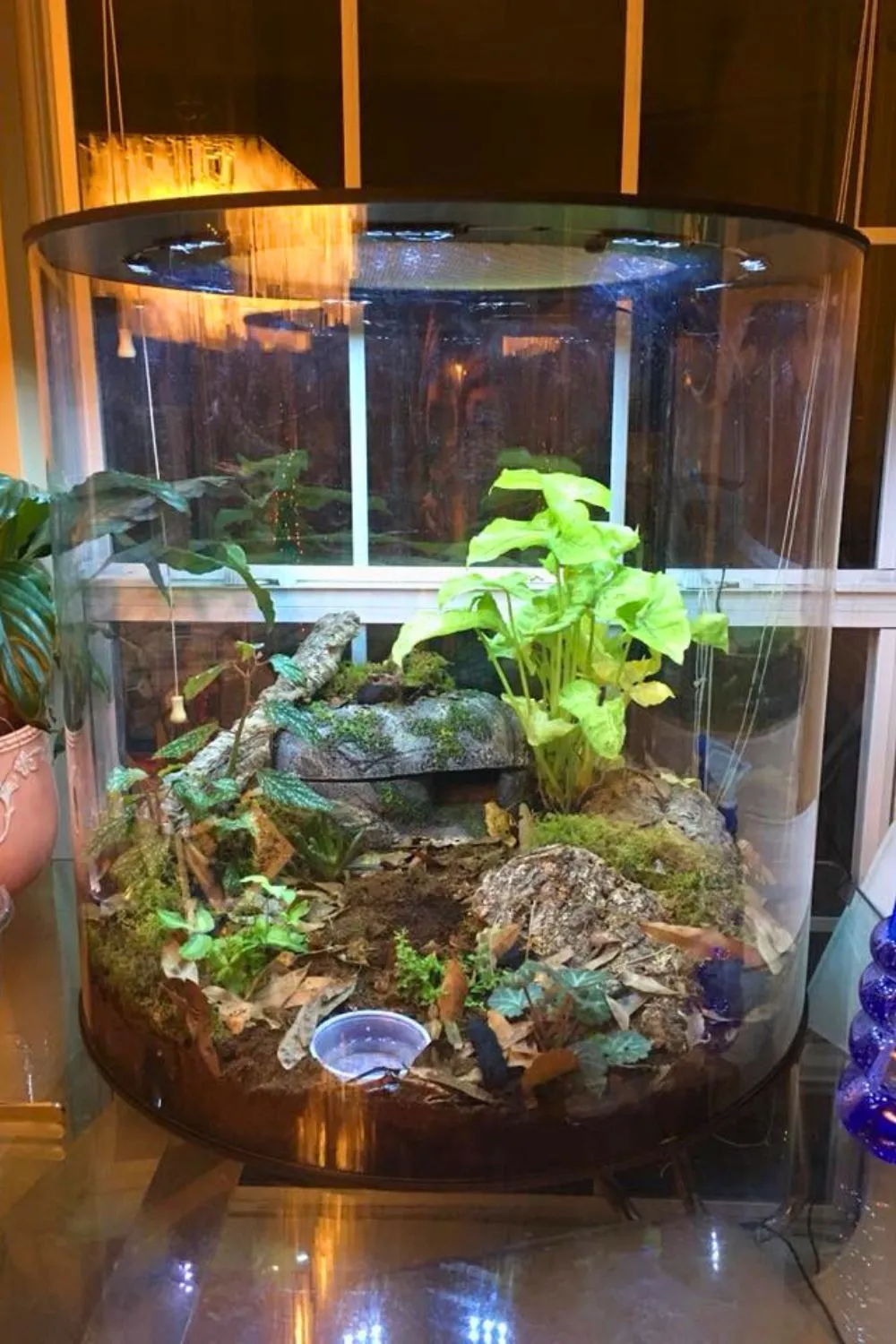
Selecting the right plants is crucial for a successful and thriving planted tarantula enclosure. Consider the humidity and light requirements, as well as the size of the plant and its suitability for the enclosure. This list will provide information on some of the best plants to use, and the care required for these plants to thrive. Always research and choose plants that are non-toxic to tarantulas, ensuring the safety and well-being of your pet. These plants are also chosen for their hardiness and ease of care, making them ideal for both novice and experienced tarantula keepers.
Pothos
Pothos plants are a popular choice for terrariums and tarantula enclosures due to their hardiness and versatility. They can thrive in a variety of lighting conditions, from low to bright indirect light. The long, trailing vines of pothos can be trained to climb or cascade, providing cover and exploration opportunities for your tarantula. Their lush, green foliage adds a vibrant touch to the enclosure, and they are relatively easy to care for, making them an excellent option for beginners. Make sure you keep the plant trimmed to prevent it from taking over the enclosure.
Care and Maintenance
Pothos require moderate watering, allowing the substrate to dry slightly between waterings. Avoid overwatering, which can lead to root rot. Provide well-draining substrate and ensure good air circulation. Pothos benefit from occasional fertilizing during the growing season, using a diluted liquid fertilizer. Prune the vines as needed to maintain the desired size and shape, and wipe the leaves to remove dust and promote photosynthesis. Pothos’s resilience, beauty, and ease of care, make it a fantastic plant to add to any tarantula setup.
Sansevieria (Snake Plant)

Snake plants, also known as Sansevieria, are another excellent choice for tarantula enclosures due to their low-maintenance nature and air-purifying qualities. They are incredibly resilient and can tolerate a wide range of conditions, including low light and infrequent watering. Their upright, sword-like leaves add a unique architectural element to the enclosure. Snake plants are also known for their ability to purify the air, which can further benefit your tarantula’s environment. These plants are a great addition to any tarantula enclosure and is known to have a low maintenance need.
Care and Maintenance
Snake plants require minimal care, making them a perfect choice for busy keepers. Water sparingly, allowing the soil to dry completely between waterings, as they are susceptible to root rot. Use well-draining substrate and avoid overwatering. Provide bright, indirect light, though they can tolerate low light conditions. Wipe the leaves occasionally to remove dust. Snake plants’ tolerance for neglect and air-purifying abilities make them ideal for any tarantula environment.
Spider Plant
Spider plants are a classic choice for terrariums due to their adaptability and attractive appearance. They produce small, spider-like plantlets, adding visual interest to the enclosure. Spider plants thrive in bright, indirect light and moderate humidity, making them well-suited for many tarantula enclosures. The plantlets can also be propagated easily, providing a continuous supply of plants for new enclosures or to share with fellow keepers. These plants add visual interest while helping to create the perfect environment for your tarantula.
Care and Maintenance

Spider plants need moderate watering, allowing the soil to dry slightly between waterings. Provide well-draining substrate. Bright, indirect light is ideal, but they can tolerate lower light conditions. Prune off the plantlets as they grow to encourage new growth, or leave them to add visual interest. Spider plants are easy to care for and will flourish well in your tarantula environment.
Bromeliads
Bromeliads, with their vibrant colors and unique forms, bring a touch of the tropics to your tarantula enclosure. Many bromeliads have adapted to retain water in their central cups, providing a source of moisture for your tarantula to drink from. They thrive in moderate to high humidity and bright, indirect light. The variety of bromeliads available, with their diverse colors and textures, allows for creative and visually appealing enclosure designs. Bromeliads provide a stunning element to the environment that is both beautiful and functional.
Care and Maintenance
Bromeliads have specific care requirements. Water the central cup of the plant, allowing it to overflow. Ensure that the soil drains well. Provide bright, indirect light. Maintain moderate to high humidity, mimicking their natural tropical environment. They benefit from well-draining substrate. Regular misting can also help maintain proper humidity levels. Careful maintenance will keep these plants thriving and bring beauty to your tarantula’s environment.
Fittonia (Nerve Plant)
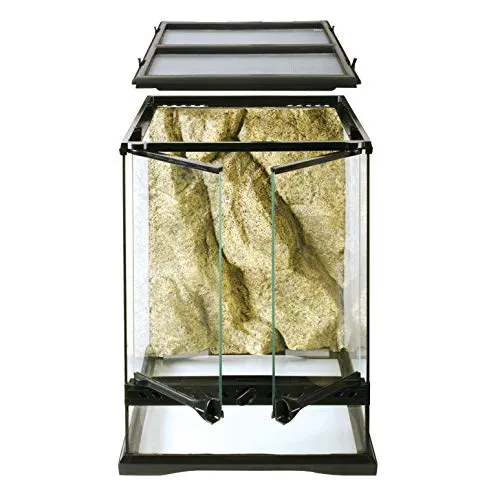
Fittonias, also known as nerve plants, are beloved for their striking veined leaves and low growth habits. They prefer high humidity, making them ideal for tarantula enclosures. Their compact size and delicate appearance make them perfect for adding ground cover. The variety of colors and patterns in Fittonia foliage adds visual interest and helps to mimic the natural forest floor environment. They can also help to regulate humidity and assist in creating a stable ecosystem for your tarantula.
Care and Maintenance
Fittonias need consistent moisture and high humidity. Water regularly, keeping the soil consistently moist but not waterlogged. Provide bright, indirect light and ensure good air circulation to prevent fungal issues. They are sensitive to drying out, so monitor their moisture levels carefully. High humidity is a must for the Fittonia, and misting is a good practice. Fittonias are an easy plant to keep and grow, and will greatly enhance your tarantula enclosure.
Setting up Your Planted Tarantula Enclosure
Creating a planted tarantula enclosure requires careful planning and execution. Proper substrate, lighting, and watering practices are essential for the plants’ survival and the tarantula’s well-being. Take your time and research these specific needs, and your enclosure will be a success. This will ensure a healthy and thriving environment. Following these steps will help you create a beautiful and practical habitat for your pet.
Choosing the Right Substrate
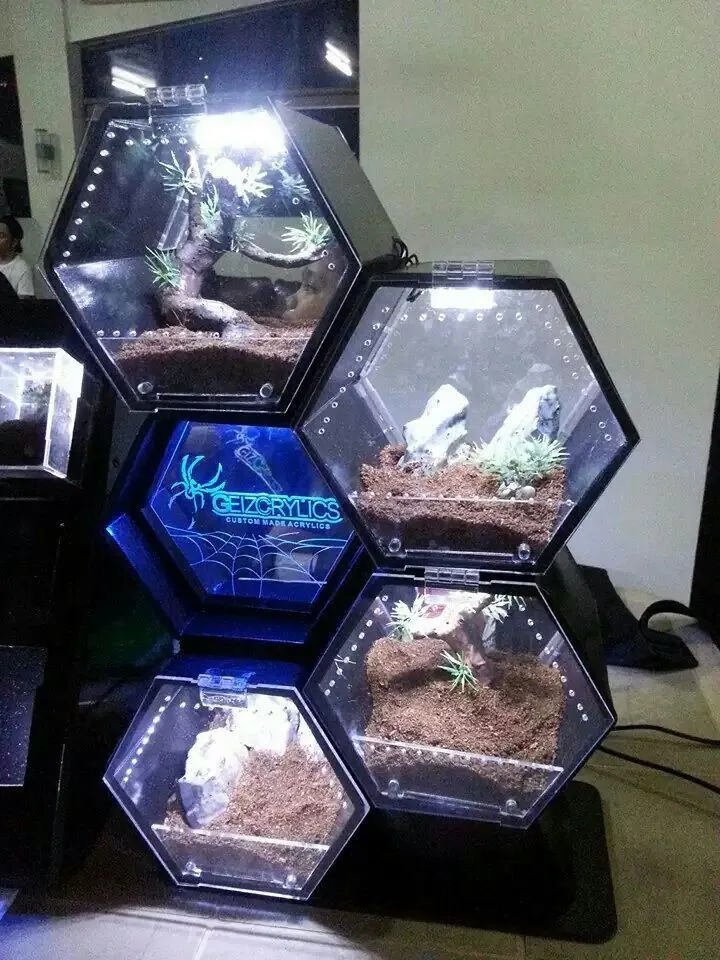
The substrate is the foundation of your planted enclosure. It should provide drainage, retain moisture, and support plant growth. A mixture of coco coir, sphagnum moss, and organic soil is often used. Coco coir retains moisture, while sphagnum moss adds texture and helps with drainage. Organic soil provides nutrients for the plants. Add a drainage layer, such as clay pebbles, at the bottom of the enclosure to prevent waterlogging and root rot. Avoid substrates that contain fertilizers or pesticides, as these can be harmful to your tarantula. It is important to carefully choose a proper substrate to benefit your tarantula and plants.
Lighting Considerations
Proper lighting is vital for plant growth. The intensity and duration of the light depend on the plants you choose. Most plants require bright, indirect light. Avoid direct sunlight, as it can scorch the leaves. Use a full-spectrum LED grow light specifically designed for terrariums. Place the light source at an appropriate distance from the plants to prevent overheating. Set a timer to provide a consistent light cycle, typically 12-14 hours per day. Monitor the plants for any signs of light stress. It is important to balance the light to make sure your plants and tarantula remain healthy and thrive.
Watering and Maintenance
Watering should be done carefully to maintain proper humidity levels and prevent mold growth. The frequency depends on the plants, humidity, and ventilation. Generally, water when the top inch of the substrate feels dry to the touch. Use a spray bottle to mist the plants and the enclosure walls to maintain humidity. Avoid overwatering, which can lead to root rot and mold. Regularly inspect the plants for any signs of pests, diseases, or nutrient deficiencies. Prune the plants as needed to maintain their shape and prevent overgrowth. A good watering and maintenance routine will give your tarantula plants a great chance to thrive.
Common Issues and Solutions
Even with the best care, planted tarantula enclosures may encounter some common issues. Knowing how to identify and address these problems is important to maintain a healthy environment for your tarantula and your plants. Here are some things to look out for and how to deal with these issues, including pests, disease, and moisture-related problems.
Pests and Diseases
Pests and diseases can be a threat to your plants. Common pests include spider mites, fungus gnats, and mealybugs. Inspect the plants regularly for any signs of infestation, such as webbing, small insects, or discolored leaves. Isolate any infected plants immediately to prevent the spread of pests. Use natural pest control methods, such as insecticidal soap or neem oil. Avoid using chemical pesticides, as they can be harmful to your tarantula. Diseases, such as fungal infections, can be managed by ensuring proper ventilation and avoiding overwatering. If a plant is severely infected, remove it to prevent the spread of disease.
Overwatering and Root Rot
Overwatering is a common problem that can lead to root rot. Symptoms include yellowing leaves, wilting, and a foul odor. Prevent overwatering by allowing the substrate to dry slightly between waterings. Ensure proper drainage and good air circulation. If root rot occurs, remove the affected plants, trim away any rotten roots, and repot the plant in fresh, well-draining substrate. Reduce watering and improve ventilation. Addressing these issues quickly will prevent further damage and keep your plants healthy. Properly monitoring the enclosure is the best way to make sure you catch any potential problems before they get out of hand.
Conclusion
Adding live plants to your tarantula enclosure is a rewarding way to create a more natural, enriching, and aesthetically pleasing environment for your pet. By selecting the right plants, providing proper care, and addressing common issues, you can create a thriving bioactive setup. The benefits of plants, including improved humidity, natural enrichment, and waste management, will contribute significantly to your tarantula’s health and happiness. Embrace the opportunity to transform your tarantula’s habitat into a vibrant, living world, and enjoy the unique experience of observing your tarantula thrive in a beautiful, natural setting.
